Break Cue vs Playing Cue: A Throughout Comparison
Key Takeaways
- In the break cue vs playing cue comparison, the break cue is stiffer to help deliver explosive breaks, while the playing cue is more flexible for precision and spin throughout the rest of the game.
- A break cue uses a hard tip and stiff shaft to transfer maximum energy during the break shot. A playing cue, on the other hand, uses a softer tip and flexible shaft to give players better feel, accuracy, and spin control.
- Most pro pool players’ cues include one for breaking and one for playing. This setup helps them protect their gear, improve performance in both power and control, and make the most out of every shot.
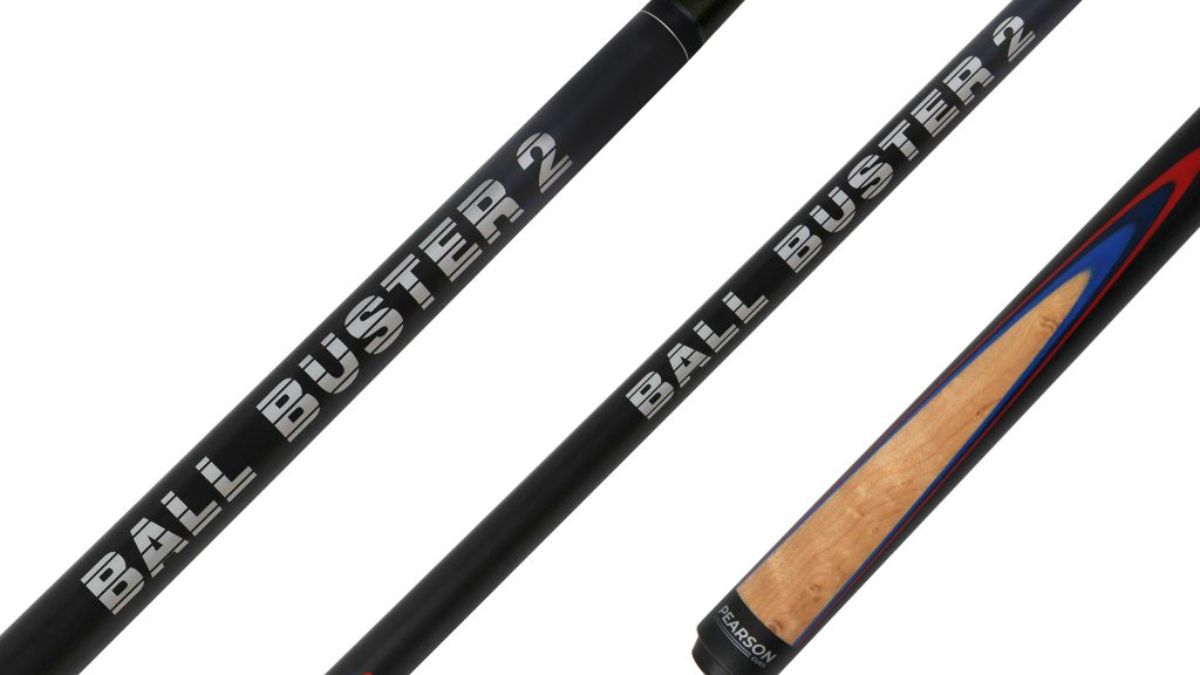
Break cue vs playing cue
What Is A Playing (Regular) Cue?
A regular cue, also known as a playing cue, is the main stick you’ll use for most shots in a game of pool. After the break shot, this is the cue you rely on for everything else, whether it’s a soft tap or a tricky bank shot. It’s designed for control, accuracy, and spin, not power.
Read more: 5 Best Pool Cues For The Money (2025 Buyer’s Guide)
Characteristics of Playing (Regular) Cue
- Balanced Weight: A playing cue is designed with an even weight distribution, typically between 18 oz and 21 oz, so it feels steady in your hands. This balance helps you make smoother, more controlled strokes, which leads to better accuracy and consistency in your shots.
- Flexible Shaft: The shaft of a regular playing cue has some flexibility, unlike the stiff shaft of a break cue. This flexibility allows the cue to absorb energy slightly during your stroke, helping you add spin to the cue ball more easily.
- Softer Tip: Playing cues usually come with a medium or soft leather tip. This type of tip grips the cue ball better on contact, making it easier to apply spin and control where the cue ball goes after the shot. It also allows for more finesse in delicate or angled shots.
- Spin Control: The combination of a softer tip and a flexible shaft gives you better control over spin. Whether you want to draw the cue ball back, push it forward, or curve it slightly, a playing cue helps you execute those moves with more precision.
- Smooth Stroke Feel: A well-made playing cue has a smooth finish that glides effortlessly through your bridge hand. This reduces friction and helps you maintain a consistent stroke, which is key to developing good habits and accuracy.
- Versatility: This type of cue is built for all kinds of shots, from straight-in shots and bank shots to soft touch shots and spins.
- Everyday Use: Unlike specialty cues like break or jump cues, the playing cue is your main go-to stick throughout the game. You’ll use it for most of your shots, making it the most important cue in your setup.
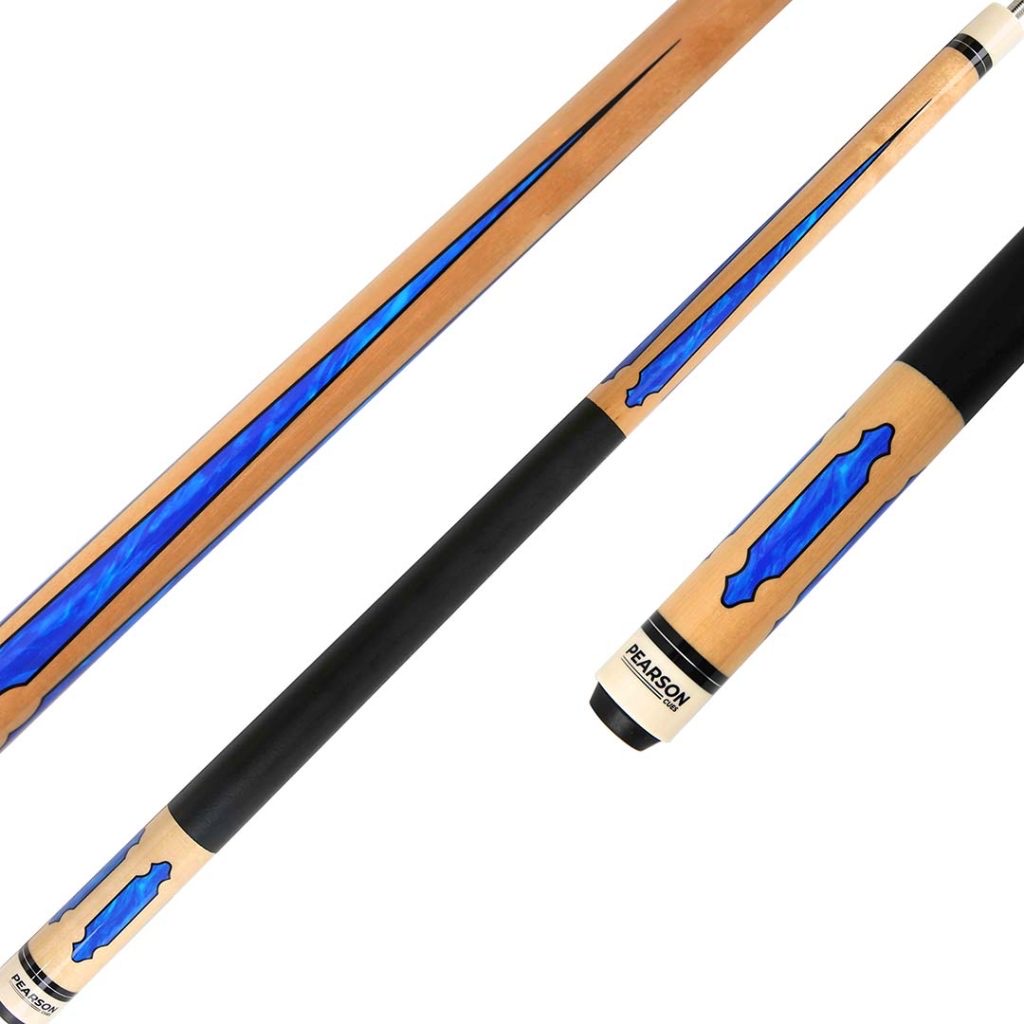
Regular cue – Pearson® League Series
Recommended products: Pearson® Pool Cues
What Is A Break Cue?
A break cue is a special type of pool cue made just for the first shot of the game: the break.
It’s designed to hit the cue ball with strong, controlled force so the balls scatter across the table. Players use a break cue to get a powerful start and to avoid damaging their regular playing cue during this high-impact shot.
Read more: Top 8 Best Pool Cues for Advanced Players (Expert Tips & Reviews)
Characteristics of A Break Cue
- Similar or Heavier Weight: Break cues usually weigh between 18 and 21 oz, but some can go even heavier, up to 25oz. Players prefer these extra weights as they help create more power when you hit the cue ball during the break.
- Hard Tip: Most break cues use a very hard tip, often made from a material like phenolic resin. A hard tip doesn’t absorb much energy, which means more of your power goes straight into the cue ball, making for a stronger and more effective break.
- Stiff Construction: Break cues are built to be stiffer and more solid than playing cues. This stiffness reduces how much the cue flexes during your shot, so more energy is delivered directly to the cue ball.
- Different Balance Point: The balance point of a break cue is often set further back compared to a playing cue. This shift helps you get better leverage and generate more momentum when making a powerful break shot.
- Thicker Taper: Break cues tend to have a thicker shaft taper. This design adds to the overall stiffness and helps transfer energy more efficiently, which many players find useful for strong and consistent breaks.
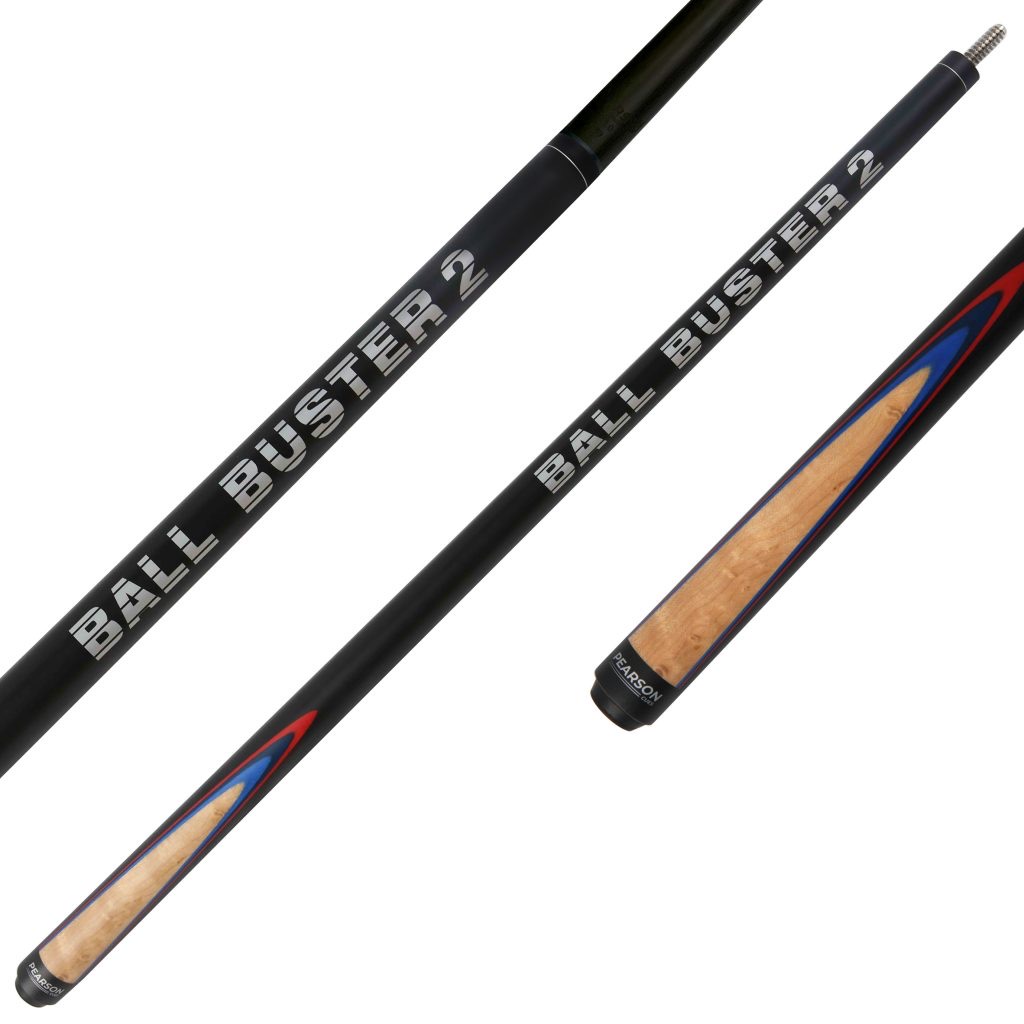
Break cue – Pearson® Ball Buster Break Carbon® Fiber Cue
Recommended products: Ball Buster Break Carbon Fiber Cue
Break Cue vs Playing Cue: What’s The Difference?
| Factor | Break Cue | Playing Cue |
| Weight | 18-21 oz (up to 25 oz) | 17-21 oz (typically 19 oz) |
| Tip | Hard phenolic tip | Soft leather/layered tip |
| Tip Size | 13-14mm diameter | 11-13mm diameter |
| Shaft | Stiff for maximum energy transfer | Flexible for spin and control |
| Ferrule | Short, shock-absorbing | Longer, balanced design |
| Purpose | Explosive break shots | Precision and control shots |
| Build | Sturdy, thicker construction | Slimmer, refined construction |
| Grip Length | 5-7 inches | 10-14 inches |
1. Purpose
The fundamental difference between break cues and playing cues lies in their design philosophy. Each cue is engineered for a specific job on the pool table, and understanding these differences is crucial for any player looking to elevate their game.
A break cue is essentially a powerhouse tool designed to deliver maximum force during the opening shot of a game. Its primary job is to scatter the racked balls across the table with authority, setting up the best possible scenario for the rest of your game.
In contrast, a playing cue (also called a regular cue) is your precision instrument for the remaining shots, built for accuracy, control, and finesse.
2. Weight
One of the most noticeable differences in the break cue vs playing cue debate is weight.
Break cues typically weigh between 18-21 ounces, with some players even preferring cues up to 25 ounces for maximum breaking power.
The heavier mass allows you to generate more kinetic energy when striking the cue ball, resulting in a more explosive break that sends balls flying across the table.
Playing cues, on the other hand, usually weigh around 19 ounces, though they can range from 17-21 ounces depending on player preference. The focus here is on balance and control rather than raw power.
A lighter, well-balanced cue allows for smoother strokes and more precise shot-making throughout the game.
Read more: What Are The Optimal Pool Cue Weights?
3. Tip Hardness
The tip of your cue might seem like a small detail, but it makes a world of difference in performance.
Break cues use hard tips, often made from phenolic material, which is incredibly durable and transfers maximum energy to the cue ball. These hard tips can withstand the repeated high-impact shots that breaking requires without leaving unwanted marks or dents on the cue ball.
Playing cues feature softer tips that provide better grip on the cue ball. This softer material holds chalk more effectively and allows players to apply spin (or “English”) to the cue ball with greater precision.
The trade-off is durability. Soft tips wear out faster but offer superior control for the intricate shots that make up most of your game.
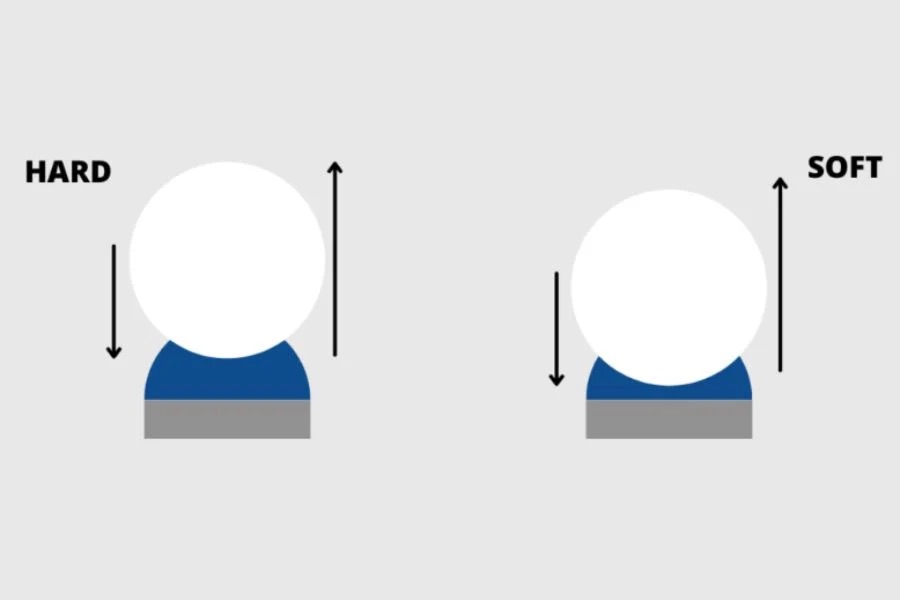
The difference between hard vs soft tips. Source: Big Cat Cues
Read more: Unlock Your Pool Game: The Pool Cue Tip Hardness Chart
4. Shaft Stiffness
The pool cue shaft stiffness represents another key difference in break cue vs regular cue design.
Break cues have stiff shafts that minimize flex during impact. This rigidity ensures that the maximum amount of energy transfers from your stroke to the cue ball, creating those explosive breaks that pro pool players’ cues are known for.
Playing cues feature more flexible shafts that actually bend slightly during your stroke. While this might seem counterintuitive, this flexibility is crucial for generating spin and making delicate, controlled shots.
The slight flex helps create the “feel” that experienced players rely on for consistent accuracy.
Read more: 10 Worth-To-Buy Inexpensive Pool Cue Shafts In 2025
5. Size & Quality
When examining the construction differences, break cues are built like tanks. They typically have thicker shafts and larger butts to handle the stress of repeated powerful impacts.
The grip length on break cues is often shorter (5-7 inches) and may feature specialized texturing for better control during the break stroke.
Playing cues are more elegantly constructed, with slimmer profiles and longer grips (10-14 inches) that accommodate the various hand positions needed throughout a game.
The length can vary, with break cues ranging from 55-58 inches (some players prefer shorter cues for breaking) and playing cues typically measuring 57-58 inches.
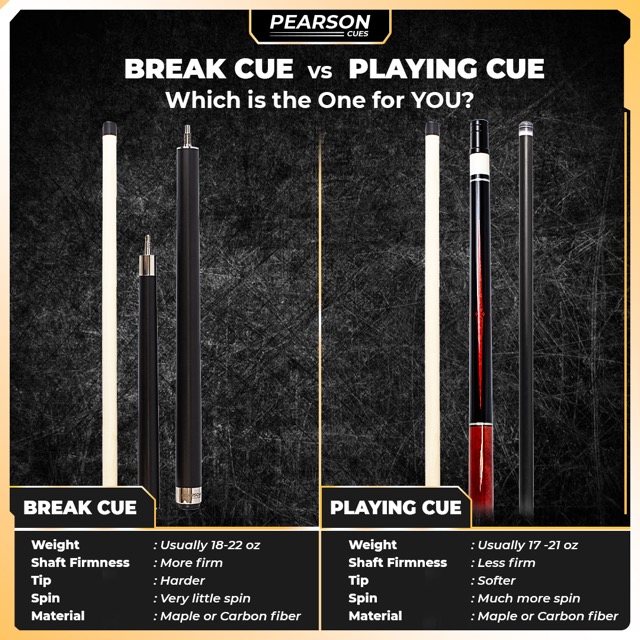
Read more: How To Choose The Perfect Pool Cue Length? Tips To Pick Pool Cue Size
6. Tips & Ferrules
The ferrule – the small piece between the tip and shaft – also differs significantly.
Break cues use shorter, shock-absorbing ferrules made from materials like carbon fiber to handle the impact of breaking.
Playing cues have longer ferrules made from softer materials that provide better balance and help absorb the gentler shock of precision shots.
Break Cue vs Playing Cue: Why Do Pro Pool Players Use Two Cues?
Professional pool players understand that having both types of cues isn’t a luxury – it’s a necessity. The break cue vs playing cue decision isn’t about choosing one over the other; it’s about having the right tool for each part of the game.
During tournaments, you’ll notice pros switching cues after the break.
They use their break cue to maximize the power and spread of the opening shot, then immediately switch to their playing cue for the rest of the rack. This strategy allows them to optimize their performance for each phase of the game.
If you’re just starting out, a quality playing cue should be your first investment since you’ll use it for 95% of your shots.
As your skills develop and you start playing more seriously, adding a dedicated break cue to your arsenal will noticeably improve your break shots and overall game strategy.
For intermediate and advanced players, having both cues is essential. The power advantage of a proper break cue can mean the difference between a weak break that leaves you playing defense and a strong break that gives you multiple shooting options.

Dave Pearson
Dave Pearson, the world's leading pool entertainer, is renowned globally as the ultimate exhibition player.
Boasting 20 world records endorsed by the prestigious Guinness Book of World Records, Dave established a legendary history in the sport industry.
